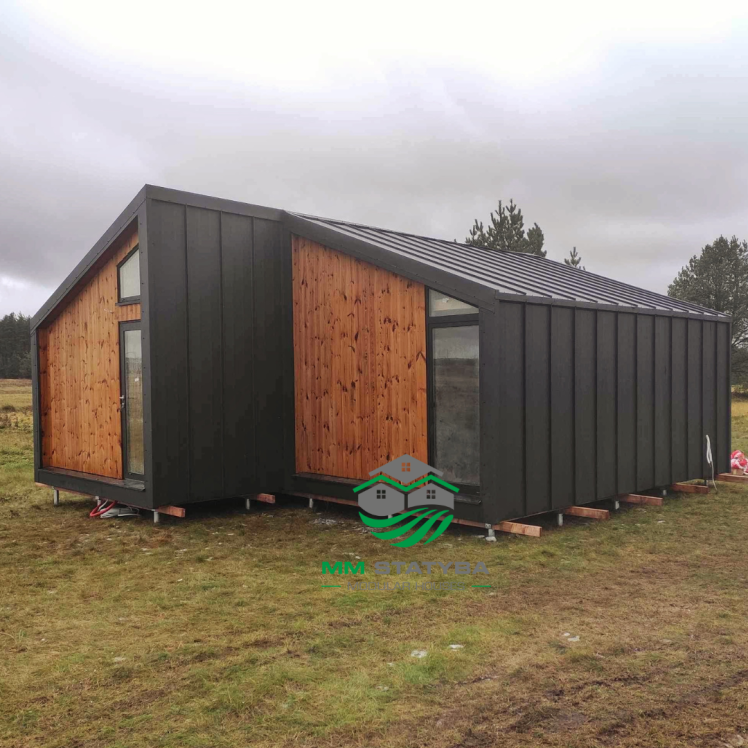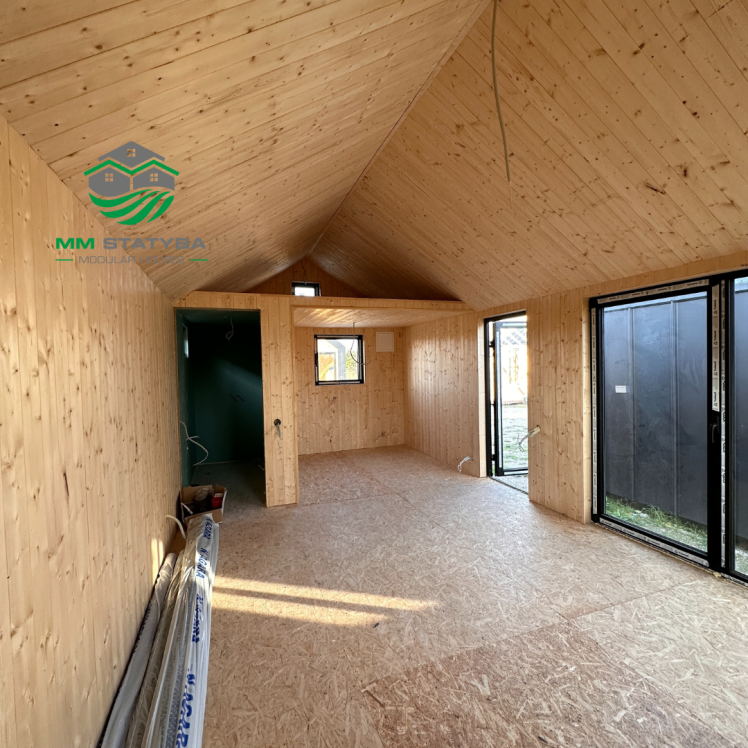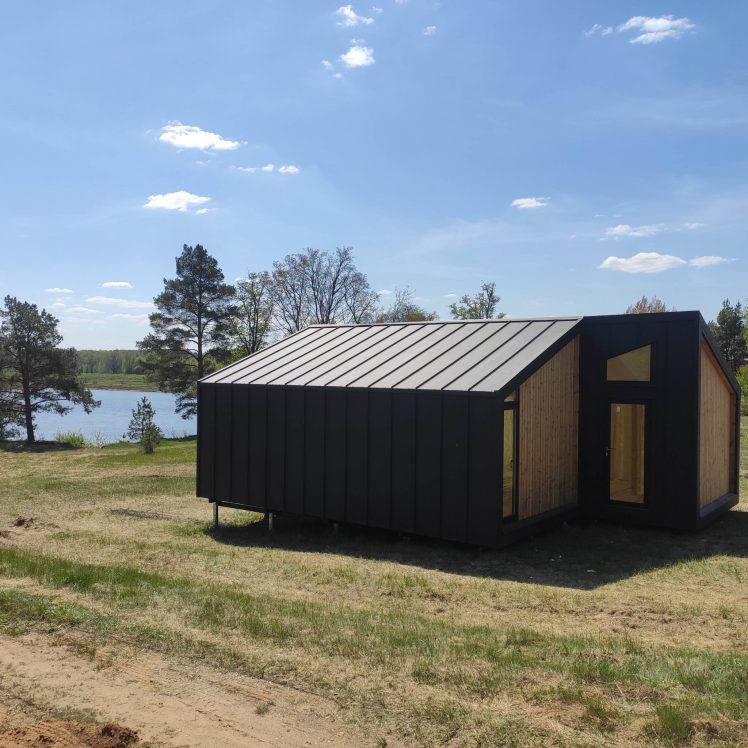“MM Statyba” is a leading manufacturer of modern, functional, and economical mobile modular houses of various sizes, suitable not only for leisure but also for permanent living. Consistently striving for innovation, we constantly offer contemporary solutions based on the latest production technologies. For 14 years, we have been turning our clients’ dreams into reality and providing professional advice and consultations throughout the process. With a team of highly qualified specialists equipped with the highest quality construction tools, we aim to exceed the expectations of all our valued clients.
Mobile modular houses, as an innovative and practical housing solution, have been attracting increasing attention for a long time. Despite the growing popularity of these houses, many people still believe in circulating myths and have a mistaken opinion about this housing option. These myths can often hinder the understanding of the true potential and advantages of these houses.
In this article, we will discuss and debunk the most popular myths about mobile modular houses. We will explain why it is an excellent living solution for both short-term and permanent living.
Myth No. 1: Mobile modular homes are built from poor-quality materials
The belief that mobile modular homes are built from poor-quality materials often arises from old stereotypes about these houses. Today’s construction technology and materials have significantly changed from those used many years ago. MM Statyba’s modular houses are built from high-quality materials that are resistant to various weather conditions and other potential threats. We carefully select materials for building houses, as we always want to provide the highest quality and durability to our clients.
Myth No. 2: A mobile modular house will quickly fall apart
It is claimed that mobile modular houses will not last long and will fall apart, but this depends on how they are designed, constructed, and maintained. Although the construction time of the houses is very short (2-3 months), this does not mean that the work is done quickly and poorly. The MM Statyba team works professionally, using advanced construction technologies to ensure stability and longevity. It is also important to mention that regular maintenance and necessary repairs help preserve the house’s condition for a longer period, so the house can last as long as a conventional house.
Myth No. 3: It is impossible to live in mobile modular houses all year round
One of the most popular myths is that it is impossible to live in mobile modular houses all year round. This is not true, as modern innovations allow the creation of very comfortable homes suitable for permanent living. Such houses can be properly insulated, equipped with efficient heating and cooling systems, and modern appliances, ensuring comfortable daily living throughout the year. MM Statyba’s mobile houses are insulated with 10 cm of polyurethane foam, equivalent to about 15 cm of wool. This insulation is fully sufficient if clients use the house for leisure. If planning to live during the winter period, we recommend increasing the frame by 5 cm and adding mineral or stone wool to the increased layer. Such insulation is equivalent to about 20 cm of wool insulation layer and is perfectly sufficient for living all year round!
Myth No. 4: Mobile modular houses are not airtight
Mobile modular houses are considered to be not airtight, but this is also a mistaken assertion. The house’s construction is thoughtfully designed down to the details – the house’s bottom is solid and airtight, aluminum profile windows have excellent thermal insulation and are resistant to scratches and negative environmental impacts. All these solutions help ensure optimal air and thermal insulation and ensure the house’s overall airtightness.
Myth No. 5: Mobile modular houses are very expensive
Many people think that mobile modular houses are very expensive. Our product range includes houses with a wide range of prices, tailored to the needs and possibilities of various clients – we offer houses from 9,800 euros excluding VAT to 31,000 euros excluding VAT. Although the initial investment may seem somewhat large, it is necessary to consider long-term expenses. Many of these houses are energy-efficient, so over time they can reduce heating and electricity costs, saving finances in the long run.















